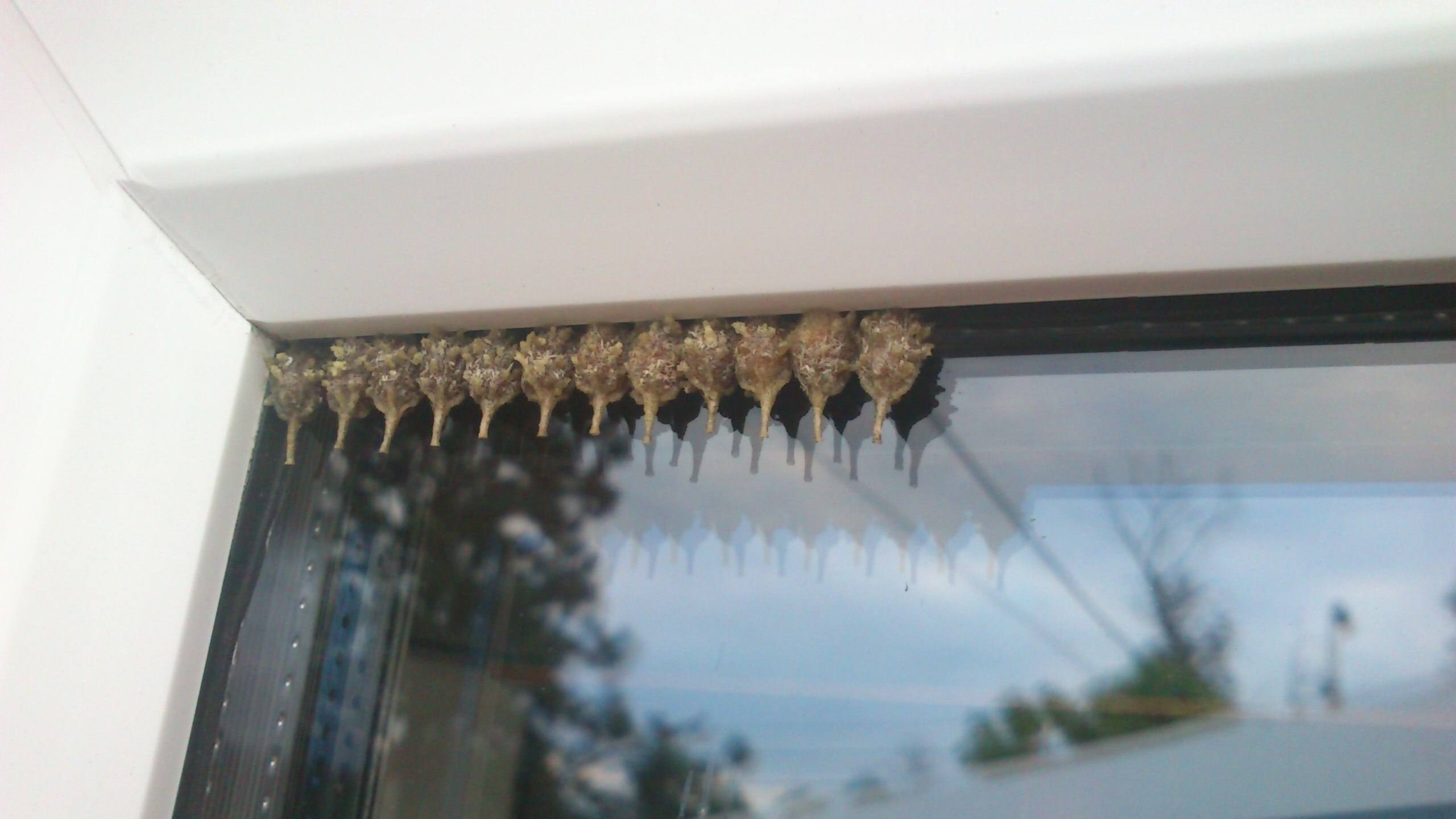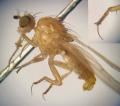Diptera.info :: Identification queries :: Other insects, spiders, etc.
|
have you seen anyting like this?
|
|
| mwkozlowski |
Posted on 22-11-2013 16:42
|
|
Member Location: Warsaw, Poland Posts: 796 Joined: 17.10.06 |
I was asked to identify this object; what I can do is to ask you the same……
mwkozlowski attached the following image:  [169.35Kb] very general entomologist |
|
|
|
| Ectemnius |
Posted on 22-11-2013 23:05
|
|
Member Location: The Netherlands Posts: 865 Joined: 22.11.11 |
Hello mwkozlowski, My guess is that this is the work of a Hymenoptera of the superfamily Vepoidea. In the Netherlands Odynerus species of the subfamily Eumeninae produce similar constructs in walls. They are called (freely translated) Chimney wasps. But I´m a Dipterist, not a Hymenopterist so hopefully someone comes along who knows what it actually is. Greetings, Ectemnius |
|
|
|
| John Carr |
Posted on 22-11-2013 23:46
|
|
Super Administrator Location: Colorado, USA Posts: 10537 Joined: 22.10.10 |
I was thinking Eumeninae, "mason wasps" in English. Other wasps with mud nests include Sceliphron (Sphecidae) and Auplopus (Pompilidae).
Edited by John Carr on 22-11-2013 23:46 |
| mwkozlowski |
Posted on 23-11-2013 02:14
|
|
Member Location: Warsaw, Poland Posts: 796 Joined: 17.10.06 |
thanks, I considered Sceliphron and Auplopus, but their mud nests I saw had rather smooth walls and other shapes; not to fansy for Odynerus? and those chimney so narrow….
Edited by mwkozlowski on 23-11-2013 02:15 very general entomologist |
|
|
|
| Ectemnius |
Posted on 23-11-2013 10:12
|
|
Member Location: The Netherlands Posts: 865 Joined: 22.11.11 |
Well, on second thought. There are bees of the genus Anthidium and they make such nest of pine resin. http://www.wildbienen.info/Fotos/small/anthidium_strigatum_03_277.jpg http://www.google.nl/imgres?imgurl=http://www.natuurfotoalbum.eu/map/watermark.php%3Ffile%3D7413&imgrefurl=http://www.natuurfotoalbum.eu/map/showphoto.php?photo%3D7413%26title%3Dkleine-harsbijanthidium-strigatum%26cat%3D663&h=480&w=640&sz=137&tbnid=6l1uoZ1WV4tPIM:&tbnh=90&tbnw=120&zoom=1&usg=__R8LapHNJ_WxsBozfSUyFgyUOsYg=&docid=JtY3F9GaVtKXiM&sa=X&ei=j3CQUsO7L8GatQb85IGYDw&ved=0CDkQ9QEwAg Those are nests of A. strigatum, the smallest member of the genus in The Netherlands. But there are two bigger species who produce similar but bigger nests... Greetings, Ectemnius |
|
|
|
| Jump to Forum: |













